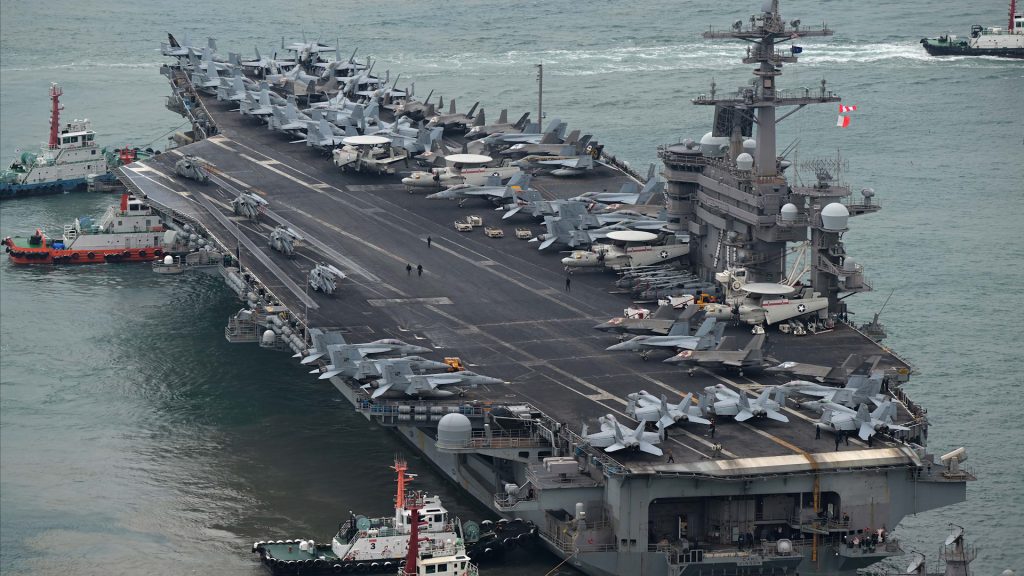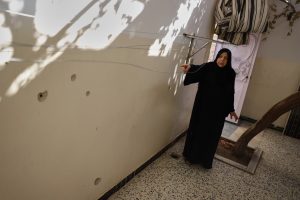2nd carrier strike group arrives in Middle East as US presses Iran for nuclear deal
Ella Greene April 15, 2025 0
- The U.S. Navy has positioned two aircraft carriers near Yemen to support nuclear negotiations with Iran and apply military pressure. Satellite imagery confirmed the USS Carl Vinson and USS Harry S. Truman operating in the Arabian Sea, with both strike groups conducting sustained airstrikes against Houthi forces.
- The Trump administration linked the show of force to diplomatic talks with Iran, and indicated a willingness to allow limited uranium enrichment with strict oversight.
- Iran signaled cautious optimism but maintained its red lines, while U.S. officials warned military action remains an option if diplomacy fails.
Full Story
Ahead of upcoming nuclear discussions with Iran, the U.S. Navy deployed the USS Carl Vinson and its accompanying vessels to the Arabian Sea. As of Monday, April 14, satellite images showed the Vinson operating near Yemen, alongside the Ticonderoga-class USS Princeton and two Arleigh Burke-class guided-missile destroyers, the USS Sterett, and the USS William P. Lawrence. This deployment supplements the USS Harry S. Truman, which has been active in air operations targeting Houthi-controlled areas in Yemen since March.
U.S. Central Command confirmed that both carriers have conducted sustained strikes against the Houthis. Officials have connected the military campaign with efforts to increase leverage over Tehran during nuclear talks.
Where are US-Iran nuclear talks happening?
Initial reports suggested that the next round of negotiations would take place in Rome. However, Iranian officials later said the discussions would resume in Oman. American officials have not publicly confirmed the location. The talks follow the Trump administration’s withdrawal from the 2015 nuclear deal and its pursuit of a more restrictive agreement.
What has Iran said about the negotiations?
On Tuesday, April 15, Supreme Leader Ali Khamenei characterized the initial discussions as appropriately managed, conveying measured optimism. He emphasized that Iran’s fundamental principles remain unchanged and advised against aligning internal policy decisions with the negotiation outcomes.
Iranian media indicated that the country may consider reducing its uranium enrichment levels, a key sticking point in the discussions. Javan, a publication aligned with the Islamic Revolutionary Guard Corps, noted that Iran had previously accepted such limits under the 2015 deal and might do so again.
What is the US position on Iran’s uranium enrichment?
Steve Witkoff, the U.S. special envoy, indicated a policy adjustment wherein the Trump administration may permit Iran to maintain uranium enrichment levels up to 3.67%, contingent upon rigorous verification measures. This represents a departure from earlier positions advocating for the complete dismantlement of Iran’s nuclear infrastructure.
Witkoff emphasized that verification must cover not just enrichment levels, but also any steps toward weaponization — including Iran’s missile capabilities and bomb triggers. The 3.67% threshold mirrors limits from the 2015 nuclear deal, which capped enrichment to fuel civilian power reactors.
How close is Iran to building a nuclear weapon?
Reports from U.S. intelligence and the International Atomic Energy Agency indicate that Iran is enriching uranium to 60%, nearing the 90% threshold for weapons-grade material. Analysts suggest that, at this rate, Iran could accumulate sufficient fissile material for a nuclear weapon within one to two weeks, though the process of weaponization would require additional time.
Analysts say that unless Iran agrees to limit enrichment and export its stockpile, the country could still reach a breakout capability within months even under a 3.67% cap.
What are the challenges to a new deal?
Witkoff’s statements suggest that the U.S. aims for a lasting agreement, eliminating the expiration provisions present in the 2015 accord. Additionally, he highlighted the importance of incorporating missile program constraints, a point of contention given Iran’s longstanding opposition to such limitations, citing their role in national defense.
Israeli officials remain skeptical of any deal that permits enrichment. While the U.S. appears willing to compromise, Israeli analysts warn that allowing Iran to maintain even a limited nuclear program poses long-term risks.
Ella Rae Greene, Editor In Chief
Ella Greene
Ella and the staff at Clear Media Project (CMP) curate these articles.
Unless otherwise noted CMP does not write these articles.
The views, thoughts, and opinions expressed in the articles published on this blog belong solely to the original authors and do not necessarily reflect the views of the blog owner. The blog owner does not claim ownership of the content shared by contributors and is not responsible for any inaccuracies, errors, or omissions.
All rights and credits goes to its rightful owners. No Copyright Infringement is intended. If you believe any content infringes on your rights, please contact us for review and potential removal.





